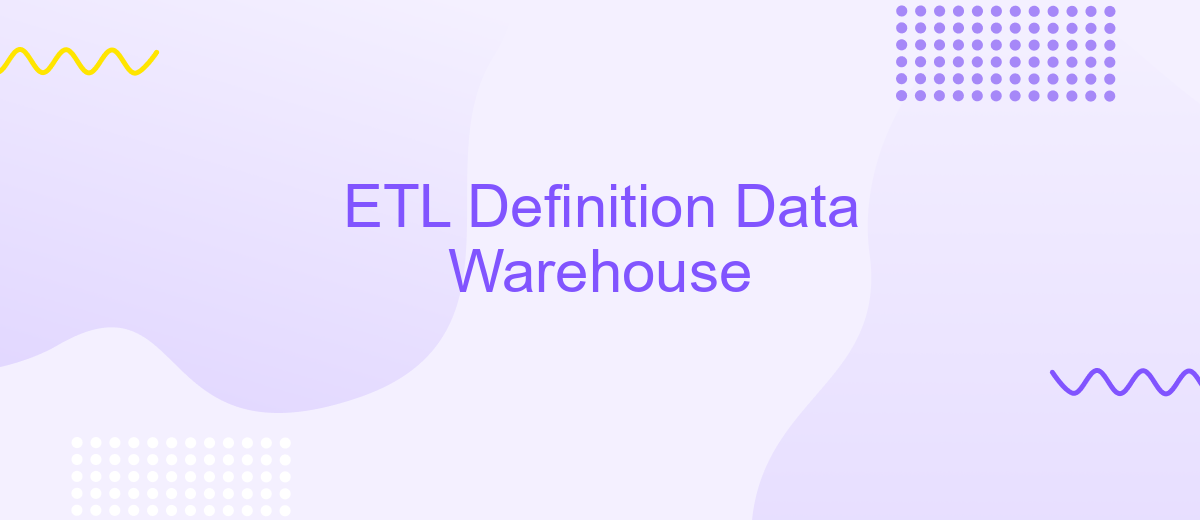ETL Definition Data Warehouse
ETL (Extract, Transform, Load) is a crucial process in the realm of data warehousing. It involves extracting data from various sources, transforming it to fit operational needs, and loading it into a data warehouse for analysis and reporting. This article delves into the ETL process, its significance, and how it underpins effective data management and business intelligence.
ETL Definition
ETL stands for Extract, Transform, Load, and is a crucial process in data warehousing. It involves extracting data from various sources, transforming it into a suitable format, and loading it into a data warehouse. This process ensures that the data is accurate, consistent, and ready for analysis.
- Extract: Collect data from multiple sources, such as databases, APIs, and flat files.
- Transform: Cleanse, filter, and reformat the data to meet the requirements of the target data warehouse.
- Load: Insert the transformed data into the data warehouse for storage and analysis.
Effective ETL processes are essential for maintaining data integrity and enabling efficient data analysis. Tools like ApiX-Drive can simplify the integration process by automating data extraction from various APIs, transforming it as needed, and loading it into your data warehouse. This automation reduces manual effort and ensures that your data is always up-to-date and ready for decision-making.
Data Warehouse

A Data Warehouse is a centralized repository that stores data from multiple sources, transforming it into a format suitable for analysis and reporting. This system enables organizations to consolidate data from various operational systems, providing a unified view of information. Data Warehouses are designed to handle large volumes of data and support complex queries, making them essential for business intelligence and decision-making processes.
To facilitate the integration of data from disparate sources, tools like ApiX-Drive can be invaluable. ApiX-Drive simplifies the process of connecting different applications and services, ensuring seamless data flow into the Data Warehouse. By automating data transfers and transformations, ApiX-Drive helps maintain data consistency and accuracy, ultimately enhancing the efficiency of the Data Warehouse. This integration capability is crucial for organizations seeking to leverage their data for strategic insights and competitive advantage.
ETL Process

The ETL (Extract, Transform, Load) process is a critical component in data warehousing, enabling the efficient movement and transformation of data from various sources into a centralized repository. This process ensures that the data is clean, consistent, and ready for analysis.
- Extract: Data is collected from multiple sources, such as databases, APIs, and flat files. Tools like ApiX-Drive can simplify this step by automating data extraction from various platforms.
- Transform: The extracted data is then transformed to fit the data warehouse schema. This involves cleaning, filtering, and aggregating the data to ensure accuracy and consistency.
- Load: Finally, the transformed data is loaded into the data warehouse. This step ensures that the data is stored in an optimized format for quick retrieval and analysis.
By following these steps, organizations can ensure that their data is accurate, up-to-date, and ready for business intelligence activities. Leveraging tools like ApiX-Drive can further streamline the ETL process, making it more efficient and reliable.
ETL Tools

ETL tools are essential for extracting, transforming, and loading data into a data warehouse. These tools help automate the process, ensuring that data is accurate, consistent, and accessible for analysis. By leveraging ETL tools, businesses can save time and reduce the risk of errors associated with manual data handling.
There are numerous ETL tools available, each offering unique features tailored to different business needs. Some tools are designed for large-scale data integration, while others focus on ease of use and quick deployment. Choosing the right ETL tool depends on factors such as data volume, complexity, and specific business requirements.
- Apache Nifi: A robust, open-source tool for automating data flows.
- Talend: Provides a comprehensive suite for data integration and management.
- ApiX-Drive: A user-friendly service for setting up integrations without coding.
- Informatica PowerCenter: Known for its scalability and extensive features.
- Microsoft SQL Server Integration Services (SSIS): Ideal for SQL Server environments.
ApiX-Drive stands out for its simplicity and efficiency, allowing users to connect various applications and automate data workflows without any technical expertise. This makes it an excellent choice for businesses looking to streamline their data integration processes with minimal effort.
Benefits of ETL
ETL (Extract, Transform, Load) processes offer numerous benefits for data warehousing. One of the primary advantages is the ability to integrate data from multiple sources into a single, unified repository. This consolidation enables organizations to have a comprehensive view of their data, leading to more informed decision-making. ETL also ensures data quality and consistency by transforming and cleaning the data before loading it into the warehouse, reducing errors and improving reliability.
Another significant benefit of ETL is automation. Tools like ApiX-Drive facilitate the automation of data extraction, transformation, and loading processes, minimizing the need for manual intervention. This not only saves time but also reduces the risk of human error. Furthermore, ETL processes can be scheduled to run at specific intervals, ensuring that the data warehouse is always up-to-date. This capability is crucial for businesses that rely on real-time data analytics to drive their operations and strategies.
FAQ
What is ETL in the context of data warehousing?
Why is ETL important for data warehousing?
What are the main stages of the ETL process?
How often should the ETL process be run?
Can ETL processes be automated?
Do you want to achieve your goals in business, career and life faster and better? Do it with ApiX-Drive – a tool that will remove a significant part of the routine from workflows and free up additional time to achieve your goals. Test the capabilities of Apix-Drive for free – see for yourself the effectiveness of the tool.

